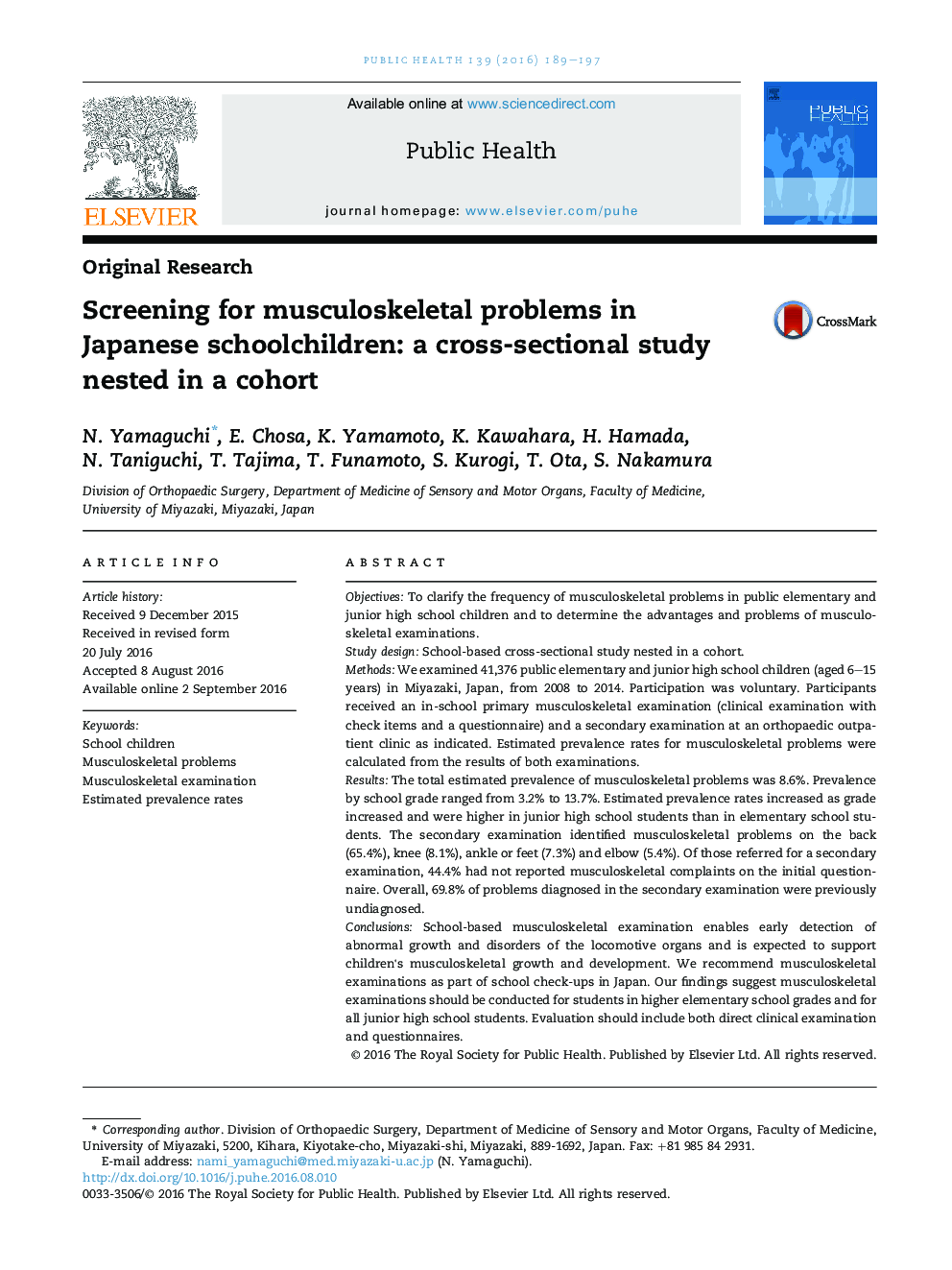| کد مقاله | کد نشریه | سال انتشار | مقاله انگلیسی | نسخه تمام متن |
|---|---|---|---|---|
| 5122940 | 1487204 | 2016 | 9 صفحه PDF | دانلود رایگان |
- The total estimated prevalence of musculoskeletal problems was 8.6%.
- Estimated prevalence rates increased as school grade increased.
- Evaluation should be made by both direct clinical examination and questionnaire.
- School-based screening enables early detection of musculoskeletal problems.
ObjectivesTo clarify the frequency of musculoskeletal problems in public elementary and junior high school children and to determine the advantages and problems of musculoskeletal examinations.Study designSchool-based cross-sectional study nested in a cohort.MethodsWe examined 41,376 public elementary and junior high school children (aged 6-15 years) in Miyazaki, Japan, from 2008 to 2014. Participation was voluntary. Participants received an in-school primary musculoskeletal examination (clinical examination with check items and a questionnaire) and a secondary examination at an orthopaedic outpatient clinic as indicated. Estimated prevalence rates for musculoskeletal problems were calculated from the results of both examinations.ResultsThe total estimated prevalence of musculoskeletal problems was 8.6%. Prevalence by school grade ranged from 3.2% to 13.7%. Estimated prevalence rates increased as grade increased and were higher in junior high school students than in elementary school students. The secondary examination identified musculoskeletal problems on the back (65.4%), knee (8.1%), ankle or feet (7.3%) and elbow (5.4%). Of those referred for a secondary examination, 44.4% had not reported musculoskeletal complaints on the initial questionnaire. Overall, 69.8% of problems diagnosed in the secondary examination were previously undiagnosed.ConclusionsSchool-based musculoskeletal examination enables early detection of abnormal growth and disorders of the locomotive organs and is expected to support children's musculoskeletal growth and development. We recommend musculoskeletal examinations as part of school check-ups in Japan. Our findings suggest musculoskeletal examinations should be conducted for students in higher elementary school grades and for all junior high school students. Evaluation should include both direct clinical examination and questionnaires.
Journal: Public Health - Volume 139, October 2016, Pages 189-197
